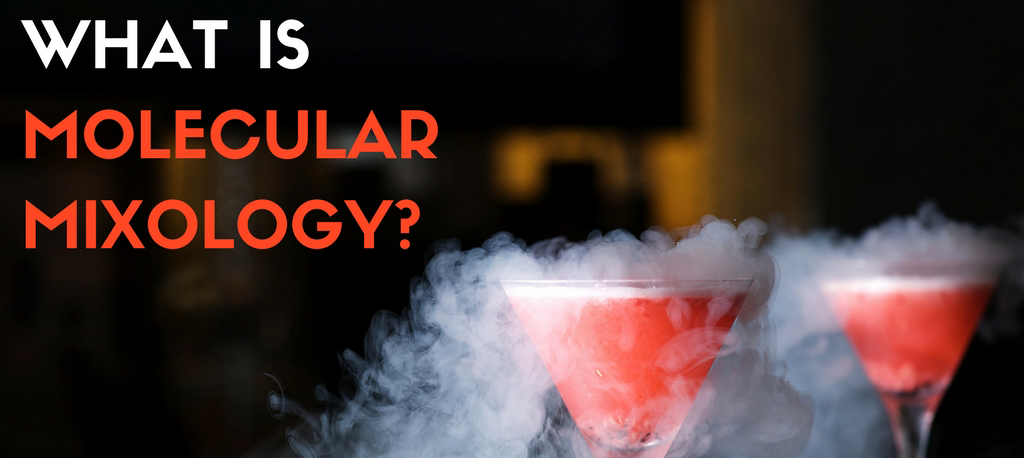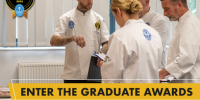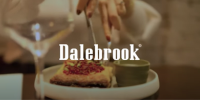What is Molecular Mixology? Plus 5 Ways it Could Shake Up Your Cocktails

Whilst ‘molecular mixology’ is far from a new concept, smoking, hissing and colour-changing cocktails that would rival the potions of Harry Potter are becoming ever more elaborate and impressive.
Using the same principles as molecular gastronomy and flavour pairing, molecular mixology uses chemistry to match ingredients with similar molecular compounds. Alongside creating surprising yet satisfying flavour combinations, molecular mixology typically uses chemical techniques to produce interesting-looking drinks that take the drinker on a journey of the senses.
With talented mixologists increasingly incorporating chemical and experiential elements into their repertoires, we’re sharing five different tricks and tools to help give your cocktail menu a touch of magic – with the help of those all-important cocktail shakers, muddlers and mixers, of course.
1) Layering
It’s a basic skill every person working behind the bar needs to master, but the art of liquor layering is actually reliant upon chemistry. To layer effectively, you need to know the densities of different ingredients in a cocktail.
The rainbow pour is a great demonstration of this chemistry in action. The more dense liquids will naturally lie at the bottom of a drink, so if you’d like them to rest higher up a cocktail glass for taste or presentation purposes, you’ll need to change the density of liquids that would otherwise be higher up on the index. This can be achieved by mixing the substance with a thicker alcohol or mixer to increase density or using jellification.
2) Jellification
Those little gel spheres often found on plates in fine dining restaurants have also made their way into glasses, which means it could be time for your chef and bar manager to skill share! Jelly balls provide pops of flavour within drinks, but aren’t the only use for jellification in molecular mixology.
Adding stabilisers such as xanthum gum can thicken liquids, allowing you to change their density. This can allow you to layer a liquid contrary to its natural density, or even to suspend things such as infused fruits or spheres within the liquid. Cubes of jelly can be used as part of presentation to top a glass or there’s even the possibility of creating an entire cocktail in jellied form, which can make a great ‘alternative dessert’ - just like alcoholic milkshakes.
3) Powders
Egg white powder has been used to make foam for cocktails such as sours for many years, but there are far more uses for ingredients in powdered form emerging. The current trend for topping glasses of cocktails or Prosecco with cotton candy is just one example as it uses coloured sugar in a powdered form. Using flavoured candyfloss is a cute and colourful way to add a new taste dimension to your drinks.
Flavoured sugars and dehydrated fruits and vegetables are among the most well-known cocktail toppers, but did you know it’s also possible to reduce different spirits to powdered form too? With specialist equipment such as a vacuum evaporator you can make powdered alcohol, which can add a sprinkle of a different flavour on top or on the rim of a glass.
4) The 3 Fs – fizz, foam and fog
While fizz and foam are very familiar cocktail components, the experiential addition of fog or smoke to the serving of drinks is a more recent thing. Adding a carbonated element is a simple way to change the nature of a drink and is at the core of the Aperol Spritz - a classic that is enjoying something of a renaissance at the moment - but there’s no need to add a fizzy liquid to your alcohol when you could just carbonate the cocktail itself!
The fun of fluffy, light, foam has transcended the simple sour with many mixologists, such as those at The Alchemist, now experimenting with different flavoured foams using whipping siphons to speed up the process. Finally, is there anything more magical than a drink being served up in the midst of some mystical fog? The secret to serving a smoking cocktail that looks like it’s fresh out of a cauldron or lab is usually dry ice.
5) Infusion
Along with a complete cocktail making kit, an essential skill that any mixologist should have in their arsenal is infusion. Infusion is frequently used to change the flavour of a base spirit, often using herbs, fruit or other foods. A classic Bloody Mary can be transformed using vodkas infused with flavours such as chilli or even bacon – perfect for a Sunday brunch menu!
Alcohol is very good at extracting flavours from foods, but it can also take on non-food flavours that can form some fantastic molecular combinations. Using rapid infusion techniques alcohol can imbue tastes such as leather, smoke, or flora and fauna flavours.
What do you think of molecular mixology? Do you prefer classic flavour combinations and techniques, or are you fully immersed in the wonders of cocktail alchemy? Share your opinions and innovative flavour combinations you’ve been shaking up in your own bar with us over on Twitter @BunzlLockhart.




Leave a comment